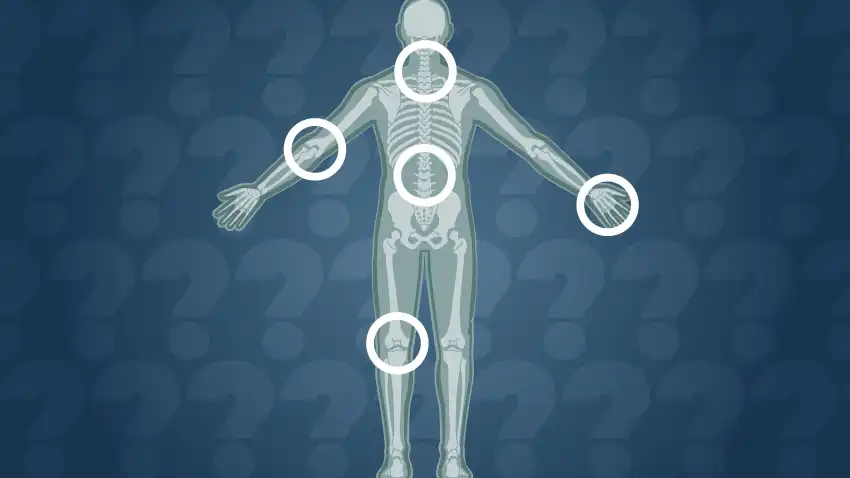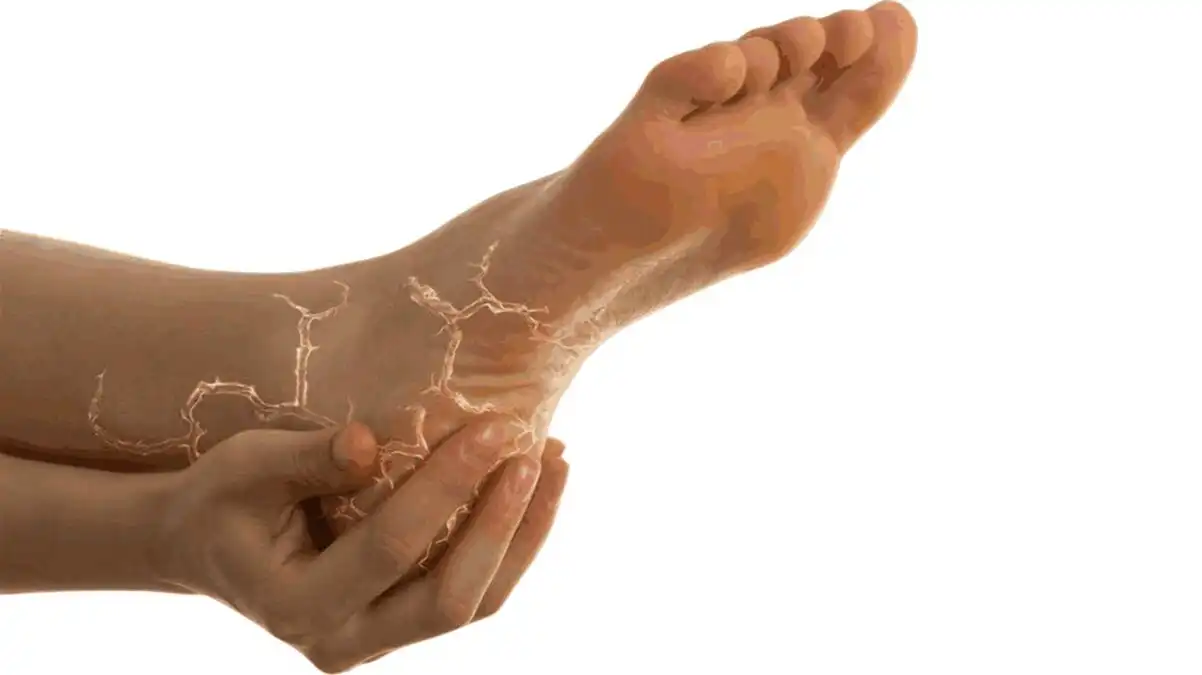Enter the fascinating world of musculoskeletal elbow disorders, where every professional gesture becomes a note in the complex symphony of epicondylitis, exploring the nuances of the relationship between work and muscle health.
Introduction
Musculoskeletal disorders of the elbow, such as epicondylitis, represent significant health problems related to the musculoskeletal system, predominantly affecting the elbow region. Epicondylitis, commonly known as “tennis elbow” when the outer tendons are affected, and “golfer’s elbow” when the inner tendons are affected, manifests itself by painful inflammation of the tendons.
The correlation between these disorders and the professional environment is frequently observed, particularly in professions requiring repetitive arm movements, frequent grasping activities or excessive strain on the elbow muscles. Workers involved in manual tasks, repetitive movements or sports activities that put intense strain on the arm are more prone to developing musculoskeletal disorders of the elbow.
In order to prevent these professional conditions, the implementation of ergonomic practices at work is essential. Risk management may include scheduling regular breaks to allow elbow muscles to rest, promoting stretching exercises to maintain flexibility and muscle strength, and using ergonomic equipment appropriate for the elbow. specific nature of professional activities.
Understanding the specific physical demands of each workstation is a crucial step in designing effective preventive measures. Employers can work with occupational health professionals to analyze jobs, identify risky movements and implement appropriate solutions. This may include ergonomic adjustments in the workplace, the provision of better adapted tools, or even raising employee awareness of the importance of good postural practices.
By adopting these preventive measures, it becomes possible to minimize the potential impact of elbow musculoskeletal disorders on the health of workers. A proactive approach focused on prevention and promotion of musculoskeletal health not only helps improve employee well-being, but also reduces costs associated with health-related absences and medical treatments. In short, investing in ergonomics and prevention is a wise approach to promoting a healthy and productive work environment.
Causes
- Repetitive movements : Work activities that involve repetitive movements of the arm and elbow, such as typing, heavy mouse use, or repetitive manual tasks, can place constant strain on the muscles and tendons of the elbow, thus leading to epicondylitis.
- Incorrect posture : Adopting an incorrect posture for long periods of work can increase strain on the elbow muscles. This can occur when workers maintain a non-ergonomic position or when performing tasks that require an awkward posture.
- Use of vibrating equipment : Frequent use of vibrating tools or equipment can also contribute to musculoskeletal disorders of the elbow. Constant vibration can cause increased stress on the elbow structures, increasing the risk of epicondylitis.
- Excessive load : Lifting heavy loads incorrectly or regularly can put excessive strain on the muscles and tendons of the elbow, promoting the development of disorders such as epicondylitis.
- Ergonomic factors : Non-ergonomic working conditions, such as poorly designed desks, inappropriate chairs, or ill-fitting workstations, can contribute to musculoskeletal disorders of the elbow.
- Physical Stress : Physical stress from work demands, especially when it involves repetitive movements or uncomfortable positions, can increase the likelihood of developing elbow disorders.
Symptoms
The symptoms of epicondylitis, also known as tennis elbow or golfer’s elbow, can vary in severity. Here are some of the common symptoms associated with this condition:
- Elbow pain : Pain is usually felt on the outside of the elbow for lateral epicondylitis (tennis elbow) and on the inside for medial epicondylitis (golfer’s elbow).
- Pain when gripping : The painful sensation may increase when gripping objects, especially with a firm grip.
- Weakness in the hand and wrist : Some individuals may experience weakness in the hand, especially when trying to grasp or lift objects.
- Stiffness : The elbow may become stiff, which can limit range of motion.
- Tenderness to touch : The affected area may be tender to touch, and light pressure may trigger the pain.
- Radiating pain : Pain may radiate down the forearm, which can make it uncomfortable to use the hand and wrist.
- Worsening with certain activities : Symptoms may worsen with specific activities, such as lifting heavy objects, rotating the wrist, or flexing the elbow.
- Nighttime pain : Some people may experience increased pain during the night, which can disrupt sleep.
Preventive measures
Preventing epicondylitis at work involves implementing specific measures to reduce strain on the elbows during work activities. Here are some preventive measures to consider:
- Workstation ergonomics : Make sure your workstation is ergonomic. Adjust the height of the chair, desk and keyboard to maintain proper posture and reduce pressure on the elbows.
- Use of ergonomic equipment : Opt for tools and equipment that reduce strain on the elbows. Ergonomic handles and assistive devices can minimize excess strain.
- Task rotation : If your job involves repetitive movements, try to diversify your tasks to avoid overuse of the same muscle groups.
- Best Practices Training : Provide ergonomic best practices training to employees, emphasizing proper techniques for performing repetitive tasks without overloading elbows.
- Fitness Programs : Encourage fitness programs within the company to strengthen arm muscles and prevent epicondylitis injuries.
- Break and stretches : Build regular breaks into the workday to allow employees to rest and perform specific stretches for the elbow muscles.
- Workload monitoring : Avoid work overload by distributing tasks fairly among employees. Make sure schedules are reasonable and allow for adequate recovery periods.
- Early medical consultation : Encourage employees to consult a healthcare professional as soon as symptoms appear, in order to receive an early diagnosis and an appropriate treatment plan.
Exercises and Stretches
Strengthening Exercises
- Resistance Wrist Flexion :
- Hold a light weight in your hand, palm facing up.
- Slowly flex your wrist up and down.
- Repeat the movement, controlling the resistance.
- Supination et Pronation :
- Hold a light object in your hand with your elbow bent 90 degrees.
- Slowly rotate your hand up (supination) and down (pronation).
- Alternate sides.
- Elbow Extension with Elastic Band :
- Attach an elastic band to a fixed point.
- Hold the other end in your hand with your elbow bent 90 degrees.
- Slowly extend the elbow while maintaining resistance.
Stretching
- Wrist Flexor Stretch :
- Extend your arm in front of you, palm down.
- With the other hand, gently pull the fingers upward.
- Hold for 15-30 seconds and alternate sides.
- Wrist Extensor Stretch :
- Extend your arm in front of you, palm up.
- Use the other hand to gently pull the fingers down.
- Hold for 15-30 seconds and alternate sides.
- Triceps Stretch :
- Bend arm overhead, with hand resting along back.
- Use the other hand to apply light pressure to the elbow.
- Hold for 15-30 seconds and alternate sides.
Osteopathic treatment
Osteopathic treatment can play a beneficial role in the management of epicondylitis. Osteopaths take a holistic approach to assessing and treating musculoskeletal disorders, including those related to the elbow. Here is how osteopathic treatment can be approached in the context of epicondylitis:
- Comprehensive Assessment: The osteopath will begin by performing a comprehensive assessment of the posture, mobility and function of the elbow as well as other parts of the body that may be involved.
- Correction of imbalances: The osteopath will work to correct any imbalance in the structures of the body. This may involve gentle manual techniques to improve joint mobility and reduce muscle tension.
- Soft tissue work: Osteopathic techniques can target the soft tissues around the elbow, including muscles, tendons and ligaments. This aims to improve blood circulation, reduce inflammation and promote healing.
- Postural rehabilitation: The osteopath can recommend specific exercises aimed at strengthening the arm muscles, improving posture and preventing the recurrence of epicondylitis.
- Lifestyle advice: Advice on workplace ergonomics, lifting techniques and postural habits can be provided to avoid triggers of epicondylitis.
- Collaboration with other health professionals: Depending on the severity of the case, the osteopath may collaborate with other health professionals, such as physiotherapists, doctors or specialists, to ensure a comprehensive approach to treatment. charge.
Tips for resuming activities
- Consult Your Healthcare Professional: Before resuming any activity, be sure to consult your healthcare professional or osteopath. They will be able to assess your current condition and give you personalized advice based on your recovery.
- Follow Medical Recommendations: Follow medical recommendations specific to your condition. This may include guidelines on the frequency, intensity and type of activities you can return to.
- Start Slowly: Don’t rush into strenuous activities. Start with light exercise and undemanding activities to allow your body to gradually adapt.
- Warm up properly: Before any physical activity, make sure you do a proper warm-up to prepare your muscles and joints. Gentle stretches and warm-up exercises can help prevent injury.
- Watch for Signs of Pain: Pay attention to any pain or discomfort during and after activity. If you experience increased pain, stop and consult your healthcare professional.
- Incorporate Strengthening Exercises: Your healthcare professional may recommend specific strengthening exercises for the muscles around the elbow joint. Gradually integrate them into your routine to strengthen the region.
- Use Stress Management Techniques: Stress can exacerbate symptoms. Incorporate stress management techniques, such as meditation or deep breathing, to promote optimal recovery.
- Take a Gradual Approach to Sports: If you play a sport, return to it gradually. Start with shorter, less intense sessions, then gradually increase the duration and intensity over time.
- Prevent Relapses: Be aware of activities or movements that could make your symptoms worse. Adopt strategies to avoid situations that could cause relapses.
- Maintain Communication with Your Healthcare Professional: Regularly update your healthcare professional on your progress. They will be able to adjust your treatment plan and guide you through the process of returning to activities.
Elbow Support Selection
Choosing an elbow support depends on a variety of factors, including the nature of the condition you are treating, your personal preferences, and your specific needs. Here are some things to consider when choosing an elbow support:
- Type of Condition: If you suffer from epicondylitis (tennis elbow or golfer’s elbow), you may want to opt for a support that provides targeted compression around the forearm and elbow. If you have another condition, such as a sprain or muscle injury, the type of support may vary.
- Compression Level: Some elbow supports offer adjustable compression, which can be beneficial for adjusting the pressure to suit your needs. Proper compression can help reduce inflammation and relieve pain.
- Design: Elbow supports come in different designs, including elastic sleeves, adjustable straps, or neoprene supports. Choose the one that offers the necessary comfort while providing the required support.
- Mobility: Some elbow supports are designed to provide support without excessively restricting mobility. If you need your elbow for specific movements, look for a support that offers a good balance of support and flexibility.
- Size: Make sure you choose the correct size elbow support to ensure a proper fit. Support that is too tight or too loose can be ineffective or uncomfortable.
- Ease of Use: Some supports are easy to put on like a sleeve, while others may require adjusting straps. Choose the one that matches your preference in terms of ease of use.
- Material: Elbow supports are often made from materials such as neoprene, which provides both support and warmth. Make sure the material is breathable to avoid discomfort from sweating.
Frequently asked questions
Q: What is epicondylitis? A: Epicondylitis, also called tennis elbow or golfer’s elbow, is an inflammation of the tendons on the outside (tennis elbow) or inside (golfer’s elbow) of the elbow.
Q: How to prevent epicondylitis at work? A: Preventing epicondylitis at work involves adopting good ergonomic practices, frequent breaks, stretching exercises and strengthening arm muscles.
Q: What are the symptoms of epicondylitis? A: Symptoms include pain on the outside or inside of the elbow, grip weakness, tenderness to touch, and difficulty making wrist movements.
Q: How is epicondylitis diagnosed? A: Diagnosis is often based on medical history, a physical examination, and sometimes imaging tests such as x-rays or ultrasounds.
Q: Can exercises help prevent epicondylitis? A: Yes, arm muscle strengthening and stretching exercises can help prevent epicondylitis and increase elbow stability.
Q: When should I see a healthcare professional for elbow pain? A: If elbow pain persists, worsens, or is associated with loss of movement, it is recommended to consult a healthcare professional for a proper diagnosis and treatment plan.
Conclusion
In conclusion, epicondylitis, whether lateral (tennis elbow) or medial (golfer’s elbow), represents a common challenge for many people, particularly those whose professional or sporting activities intensely use the elbow muscles. Understanding the causes, symptoms and preventive measures is crucial to mitigate its impact on musculoskeletal health.
The holistic approach of osteopathy offers promising perspectives in the management of epicondylitis. By working on the correction of imbalances, postural re-education and soft tissue treatment, osteopaths help restore elbow functionality and prevent recurrences.
Prevention remains the key, highlighting ergonomic practices at work, targeted exercises, and a suitable diet. Posture education, healthy work habits, and early recognition of symptoms are crucial to reducing the burden of this painful condition.
Ultimately, the path to recovery from epicondylitis involves an active partnership between individuals, healthcare professionals and osteopathic practitioners. By combining various approaches, from prevention to rehabilitation, it is possible to significantly improve the quality of life of people affected by this musculoskeletal condition.



























